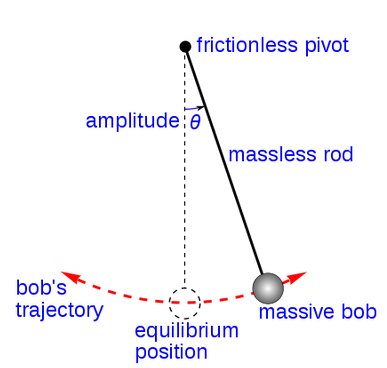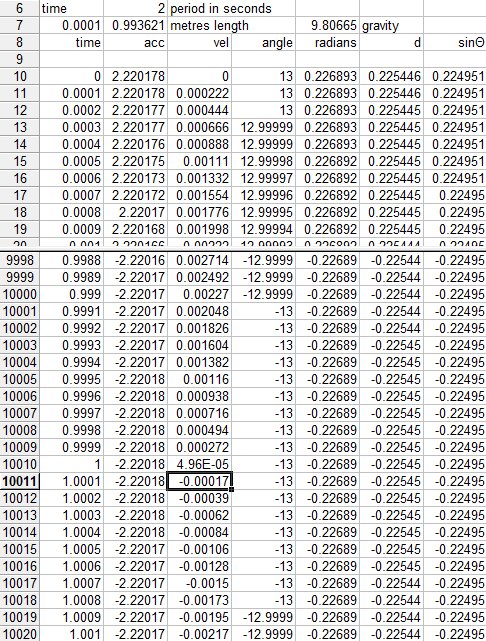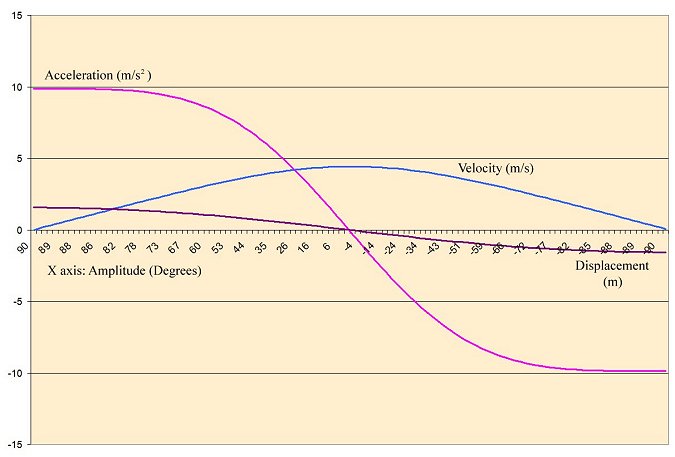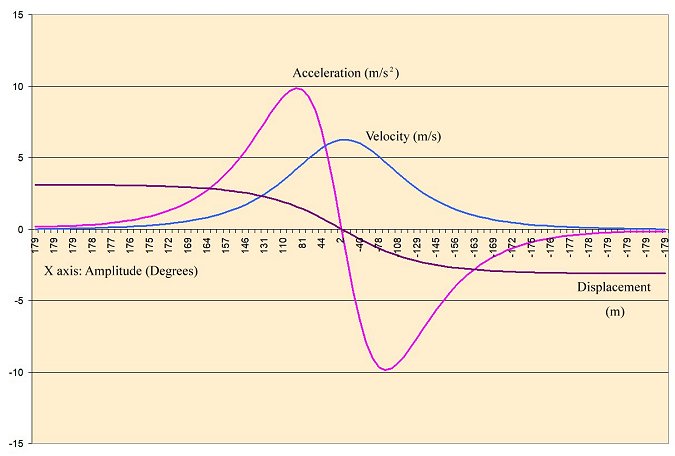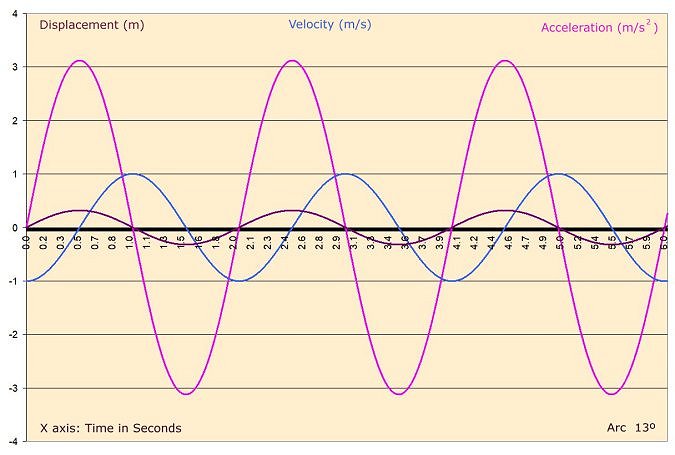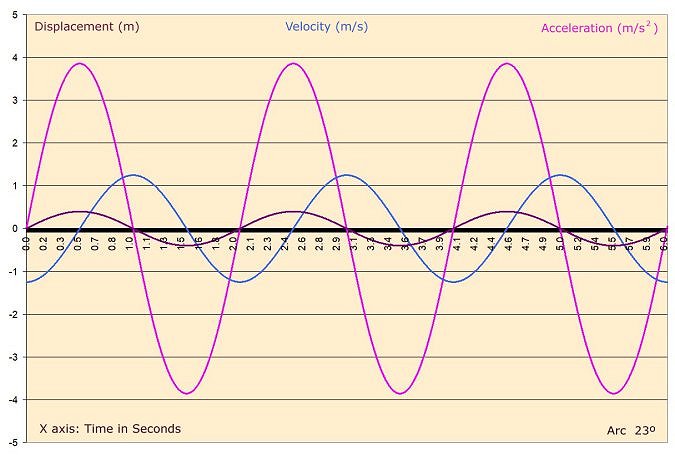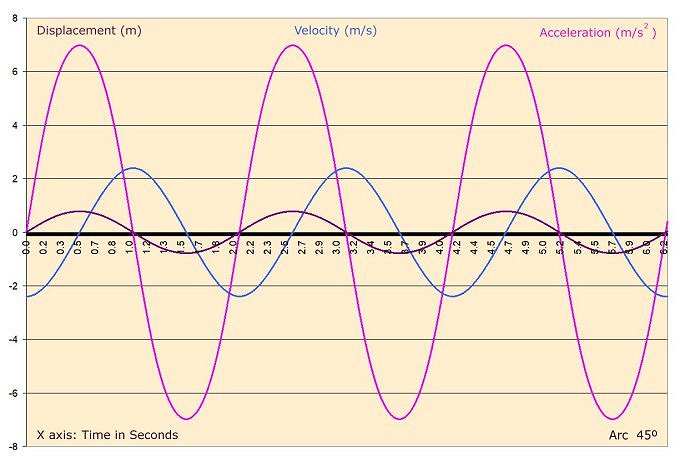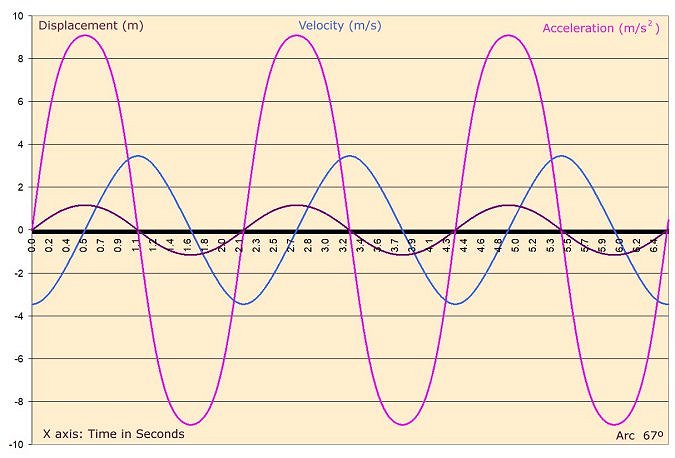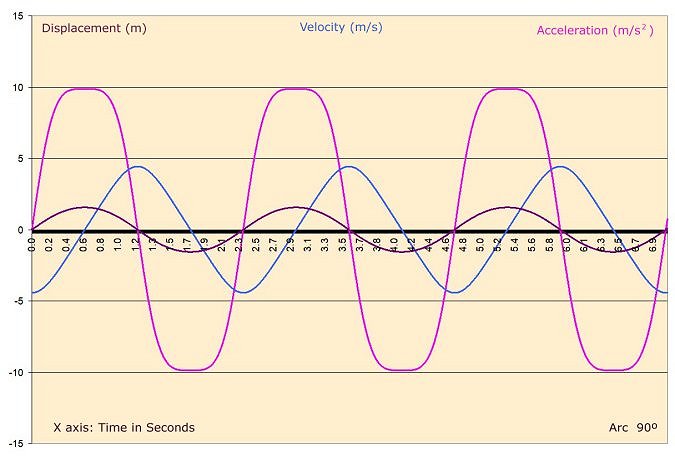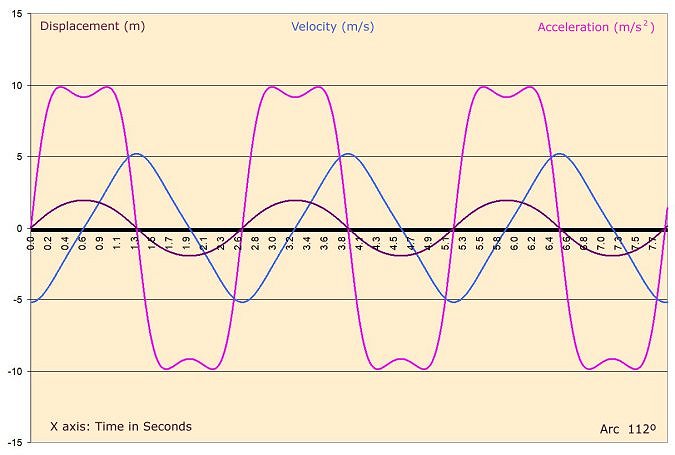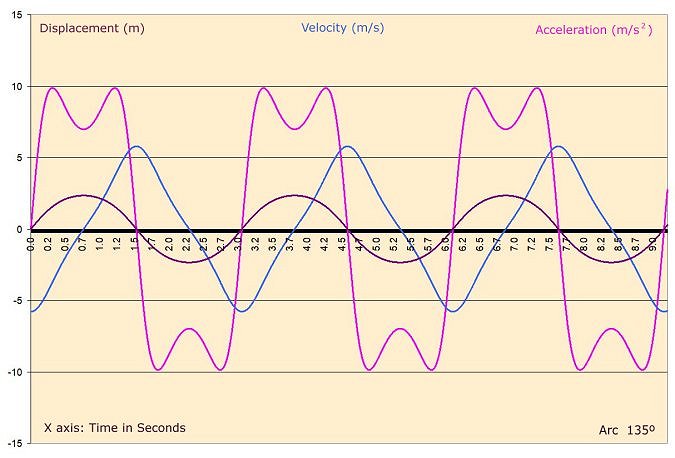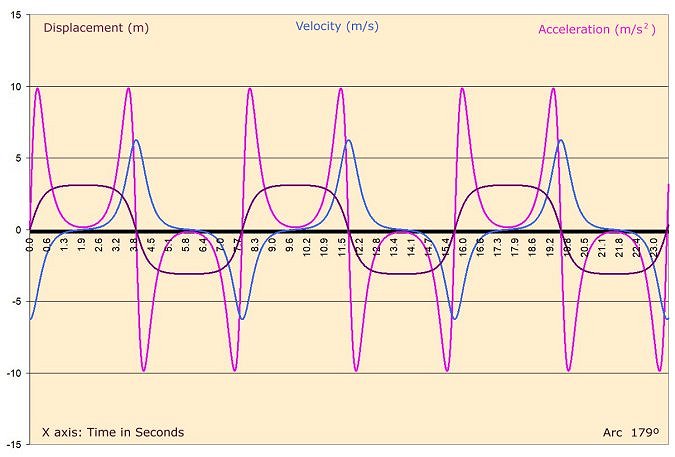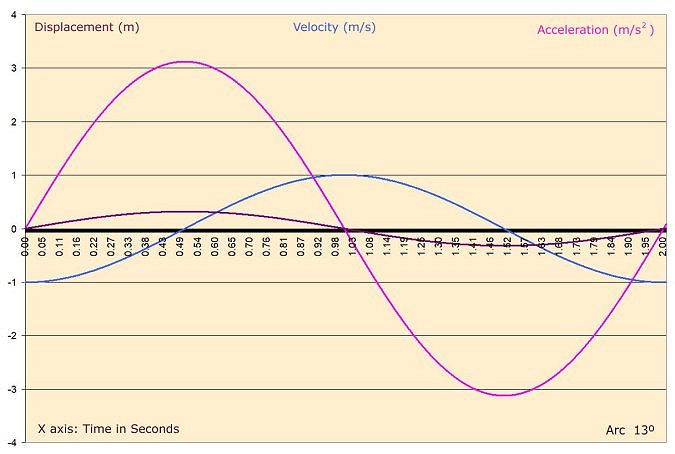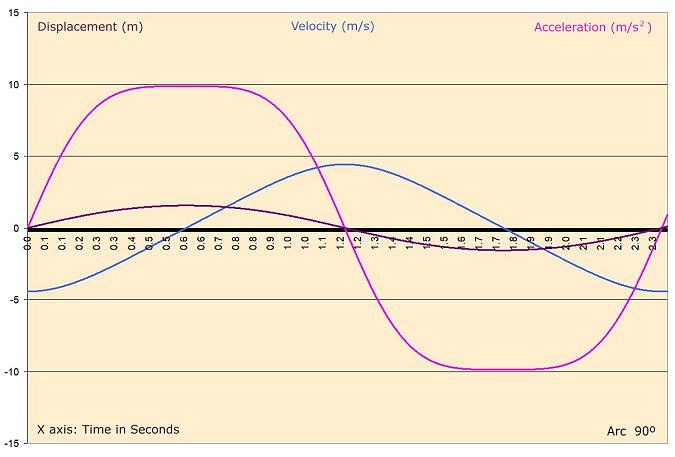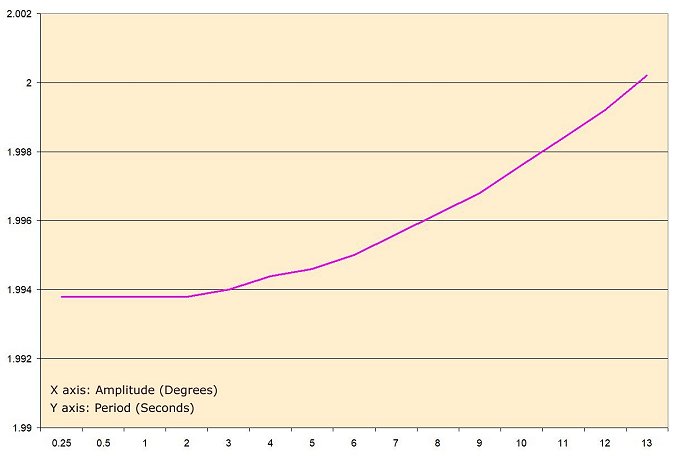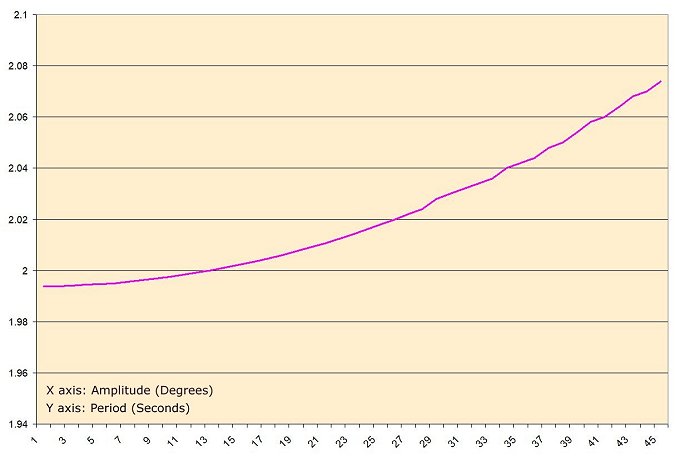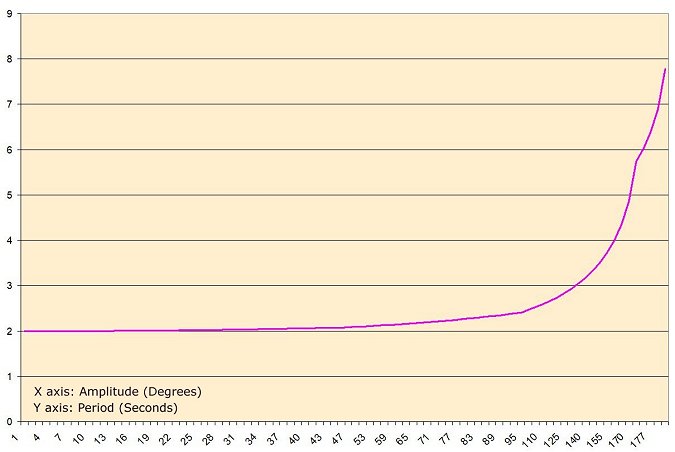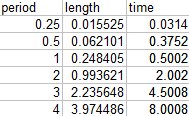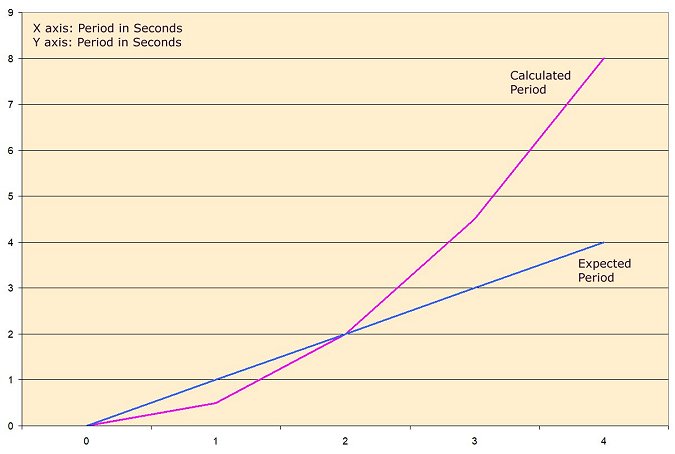What causes circular error? A search on Google provided many links to articles on the subject, but I could not find any that said "why." This page is designed to answer that question in a reader-friendly manner: if you want to, you can scroll down when you get to the maths, skip the maths, go to the graphs and continue reading. This page is also designed for readers with smartphones, which is why some of the images are presented smaller than original.
There are numerous forces acting upon a pendulum as it swings back and forth in a mechanical clock, such as gravity, elastic energy from the suspension spring, and air resistance. On this page, the subject is gravity. It is well known among clockmakers that when the angle of swing changes, the accuracy of the timekeeping changes in clocks. The effect of gravity upon timekeeping accuracy can be measured by finding how long it takes for the pendulum to go over and back. The time it takes to go over and back is known as the period.
The moment a pendulum is released, gravity pulls it straight down, and a portion of that pull acts to pull the pendulum towards its vertical position, depending on the angle, the length of the pendulum, and the force of gravity, given by the following equation, in which acceleration is theta with an umlaut (two dots) over it:
In a computer spreadsheet, the acceleration acting upon the pendulum can therefore be calculated for each moment in time, a small fraction of a second. Then the speed (angular velocity) of the pendulum is found by multiplying the acceleration by the amount of time (a small fraction of a second). The distance traveled (arc) in that amount of time is found by multiplying the angular velocity by the amount of time. The angle in radians is found by dividing the distance by the length of the pendulum. Then the angle in degrees is found by multiplying the angle in radians by 180 and dividing by pi (3.14). The results come together in a chart like this one.
The formula in each cell of the spreadsheet is written so that the angle can be changed and the rest of the chart will be re-calculated to find how long it takes for the pendulum to reach the other side. In this chart, the angle shown is 13° and it takes one second for the pendulum to reach the other side. That is expected because a one-second pendulum is 39.1 inches (0.994 metres) long. When the pendulum reaches the other side, it changes direction to swing back, and this is seen in the chart when the velocity becomes negative. You can click on the chart below to see it full size: make your own chart and experiment with it.
When the angle is changed to 45°, it takes 1.0367 seconds for the pendulum to swing from one side to the other, almost 4% longer. Since time taken becomes longer, a clock would be seen to be losing time.
The position of the pendulum (its angle) affects how gravity acts upon it, and the result is that the acceleration changes continuously. You can click on each one of all the graphs below to see it full size.
For a 13° arc from vertical:
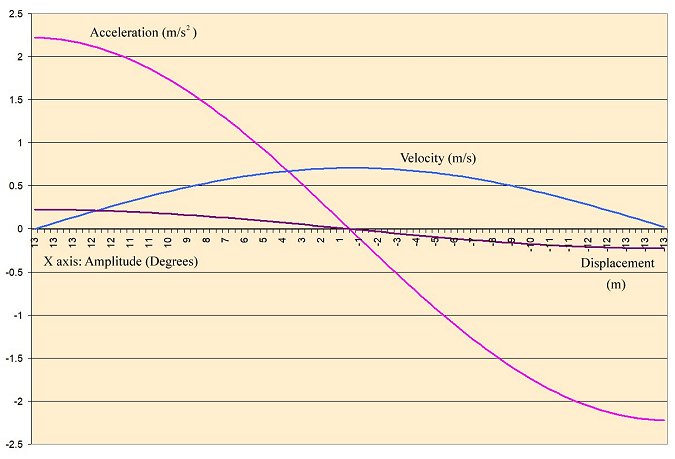 |
The effect becomes more obvious for large angles.
For a 90° arc from vertical:
At 180°, the period goes to infinity.
For a 179° arc from vertical:
Looking at several graphs below, we can see that, as the angle increases, the height (amplitude) of the acceleration curve increases, but at a declining rate: when the angle doubles, the acceleration increases by less than double.
Beyond 90°, the acceleration curve no longer reaches a higher high, and forms what looks like a wave within a wave.
And around and around we go:
Looking more closely at the graph, we can see that the period is 2 seconds (2.00664) when the arc is 13°.
However, graph shows us that the period is 2.3 seconds (2.3532) when the arc is 90°. It takes longer for the pendulum to swing over and back.
The Cause of Circular Error:
When the angle is doubled, the pendulum swings twice as far, but the acceleration does not double, and so the speed does not double either. If the pendulum swings twice as far and the speed does not double, then it takes longer to reach the other side: the period increases. The change in the period with changing angle is called circular error.
Note that I am referring to peak angular acceleration and peak angular velocity here.
The graphs below show how the period increases rapidly (exponentially) as the angle increases. The period is the time it takes to go back and forth, which is two seconds in this example. The curves are not perfectly smooth because of small rounding errors in the data.
The graph shows that the period reaches two seconds when the angle reaches 13°. This means that the period is less than two seconds for smaller angles, causing a clock to gain time, but greater than two seconds for larger angles, causing a clock to lose time as a result of circular error. Notice that, for small angles, of 3° or less, the curve becomes flat because of what is called Linearization (when sinθ is approximately equal to θ).
Changing the Length:
Performing similar calculations by changing the length of the pendulum, but keeping the amplitude unchanged at 13°, shows that the pendulum length has a stronger effect upon circular error. In the chart below, the left column shows the expected period (time taken to go back and forth) in seconds. The next column shows the pendulum length in metres for the corresponding period. The right column shows the calculated period, using the spreadsheet at the top of this page.
The graph below shows the expected period on the horizontal line (X axis) and the calculated period on the vertical line (Y axis). The data compares the one-second pendulum, which has an expected period and a calculated period of 2 seconds, with the periods for a pendulum of other lengths. The blue line shows what the line would look like without circular error (Y=X).
I would like to thank Dr. Bernstein for his extraordinary patience, guidance and support.
Dennis S. Bernstein
ScB, MSE, PhD
Computer, Information and Control Engineering
James E. Knott Professor
Department of Aerospace Engineering
University of Michigan Ann Arbor
Pendulum Error Part 2
Clock Repair Main Page
Links Page
